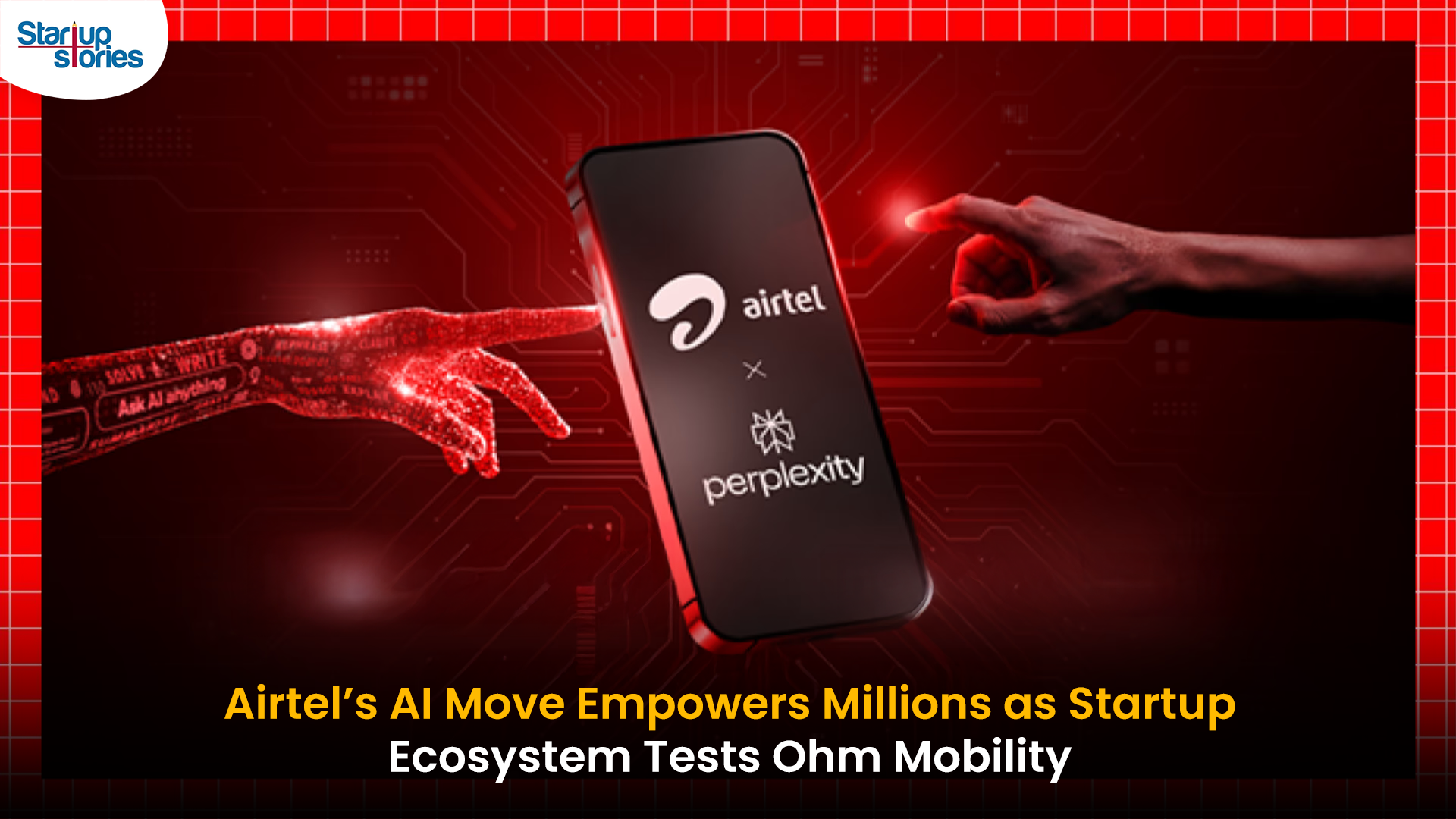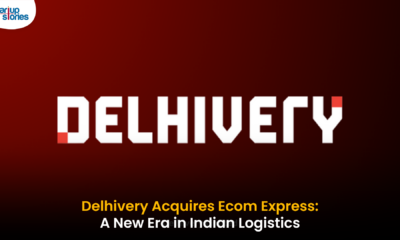Entrepreneur Stories
Google Developing Project Jarvis: An Autonomous AI Browser Assistant!

The world of artificial intelligence is rapidly evolving, and companies are pushing boundaries to create tools capable of navigating computers without human intervention. Recently, Anthropic made headlines with its Claude AI assistant, and now Google is joining the competition with “Project Jarvis,” a new AI-powered agent set to change how users interact with the internet.
Overview of Project Jarvis
According to a report by The Information, Project Jarvis is an autonomous “computer-using agent” designed specifically for the Google Chrome web browser. Inspired by the iconic AI assistant J.A.R.V.I.S. from the Iron Man films, Project Jarvis aims to help users streamline web-based tasks—such as research, online shopping, and travel booking—by independently managing these activities on their behalf. While not as advanced as Tony Stark’s famous assistant, Google’s Jarvis will handle multiple tasks autonomously, helping users manage online activities with minimal guidance.
Functionality and Operation
So, how does Project Jarvis work? The AI agent operates by capturing screenshots of the user’s browser screen, interpreting user commands, and carrying out various actions such as clicking buttons and completing text fields. However, early reports suggest it currently processes each action with a slight delay, taking a few seconds for each step.
The backbone of Project Jarvis is Google’s Gemini 2.0 AI model, which brings an intuitive edge to interacting with web content. With this enhanced model, Jarvis offers a more efficient browsing experience, allowing users to spend less time on mundane tasks.
Capabilities of Project Jarvis
Once launched, users could delegate a range of online tasks to Jarvis—researching for academic papers, searching for the best deals on e-commerce sites, or planning travel itineraries—allowing the AI to manage everything from browsing and comparing options to completing forms. With Project Jarvis, users could simply instruct the AI to gather information, navigate pages, and compile data on multiple choices, making web browsing easier and less time-consuming.
Key Features
- Autonomous Task Management: Jarvis can perform complex tasks autonomously within the browser.
- Contextual Understanding: By capturing screenshots and interpreting user commands, it can execute actions like clicking buttons or filling out forms.
- Integration with Gemini 2.0: The advanced capabilities of Gemini 2.0 enhance Jarvis’s ability to understand context and provide relevant responses.
Competitive Landscape
Google’s entrance into this field intensifies the competition in AI-driven automation, an arena also populated by Microsoft’s Copilot Vision and OpenAI’s expanding AI toolset. As companies race to develop more sophisticated AI assistants capable of managing complex tasks, Project Jarvis represents Google’s commitment to leading in this innovative space.
Comparisons with Other AI Assistants
While both Google’s Project Jarvis and Anthropic’s Claude aim to facilitate tasks through interactions with web browsers and software applications, their primary distinction lies in their focus. Project Jarvis is particularly engineered for web browsers, mainly Chrome, while Claude seems to possess a wider scope of applications across various software tools.
Future Prospects and Release Timeline
Reports suggest that a preview of Project Jarvis could be available by December 2024, coinciding with the release of Google’s next flagship Gemini large language model. This timing indicates that Google is strategically aligning its advancements in AI technology with the rollout of this innovative tool.
User Experience Enhancement
One of Project Jarvis’s most exciting prospects is its potential to create a more seamless user experience. Users may find themselves delegating routine tasks such as email management or online research to the AI assistant, allowing them to focus on more critical activities.
Conclusion
Google’s Project Jarvis signifies a major advancement in AI technology, granting users the capability to automate day-to-day tasks within their web browser. By capturing and analyzing screenshots, Jarvis can execute actions like clicking buttons and typing into fields, streamlining activities such as research, shopping, and flight bookings.
As it joins an increasingly competitive AI landscape alongside offerings from Anthropic and Microsoft, all eyes will be on how Google’s new tool stacks up against similar technologies. The implications of Project Jarvis extend beyond mere convenience; it represents a shift toward more intelligent digital assistants capable of transforming how we interact with technology in our daily lives. Whether you are a busy professional or a casual internet user, tools like Project Jarvis are likely to become integral to your online experience soon.
Entrepreneur Stories
Indian Man Quits JPMorgan, Takes 70% Pay Cut to Launch $6 Million Startup

Leaving behind a high-paying job at JPMorgan, an Indian entrepreneur embraced a 70% salary cut to pursue true purpose and passion in the startup world. Disenchanted with what he described as a “robotic” corporate routine, he sought meaningful work that made a real impact. This pivotal decision marked the beginning of his new journey, one focused on value creation rather than titles and corporate perks.
Powered by resilience and fresh perspective, the entrepreneur launched his own startup, prioritizing innovation and hands-on solutions. The road was challenging, but his vision resonated with the market: the startup quickly gained traction and raised $6 million—an impressive acknowledgement of its potential in a competitive landscape. Every hard lesson from early setbacks and bootstrapping paid off in real customer growth and investor confidence.
Today, his journey stands as an inspiring example for professionals seeking authentic success outside the corporate grind. By trading comfort for creative freedom, he grew a venture that solves important problems, generates jobs, and builds wealth beyond just salary. For ambitious founders, his story highlights the power of risk-taking, adaptability, and relentless focus on impact in India’s thriving startup ecosystem.
Videos
Larry Page: The Visionary Co-Founder Behind Google’s Global Success

Larry Page is a visionary technology entrepreneur and co-founder of Google, one of the world’s most influential companies. Born in 1973 in Michigan, Page grew up surrounded by computer technology, which inspired his passion for innovation from an early age. He studied computer engineering at the University of Michigan and later pursued his PhD at Stanford University, where he developed the revolutionary PageRank algorithm with Sergey Brin. This technology fundamentally changed the way search engines rank websites, making Google the most accurate and popular search engine globally.
The journey of Larry Page and Google began in 1998 when they officially launched the search engine from a small garage. Leveraging their unique algorithm, Google quickly surpassed competitors due to its ability to deliver highly relevant search results, transforming internet search forever. Under Larry Page’s leadership as CEO, Google expanded beyond search to launch groundbreaking products including YouTube, Gmail, and Google Maps, turning it into a global tech powerhouse that shapes how we access and interact with information online.
Larry Page later became the CEO of Google’s parent company, Alphabet Inc., driving innovation and investment in next-generation technologies such as artificial intelligence, autonomous vehicles, and healthcare solutions. His visionary leadership and commitment to technological advancement have cemented his legacy as one of the most influential figures in the tech industry. Today, Larry Page remains a key influencer in shaping the future of technology and digital innovation worldwide.
Entrepreneur Stories
India’s Tech Story: Airtel Spreads AI Access, Ohm Mobility Lessons

Bharti Airtel has launched the innovative “Airtel-Perplexity Blueprint,” partnering with Perplexity to provide over 360 million customers free access to Perplexity Pro for a year—a benefit valued at ₹17,000 ($200). This collaboration enables Airtel users across mobile, broadband, and digital TV to harness advanced capabilities in generative AI, including leading AI models like GPT 4.1, Claude, and Gemini, along with up to 300 Pro searches daily, image generation, document analysis, and personalized planning services. The move is seen as a milestone for telecom innovation and the democratization of AI in India, making powerful research and productivity tools accessible to a massive user base.
This strategic partnership positions Airtel as an “AI-first” telecom provider, allowing it to gain key insights into user interactions with artificial intelligence and adapt its networks for growing digital demands. For Perplexity, the tie-up grants exclusive access to India’s vast telecom audience, rapidly propelling the app to the No. 1 spot on the Indian App Store, surpassing global competitors like ChatGPT and Google Gemini. Airtel customers can activate their complimentary subscription seamlessly through the Airtel Thanks App, under the Rewards and OTTs section, reinforcing Airtel’s commitment to digital customer empowerment.
The broader Indian startup ecosystem reflects both breakthrough innovation and hard-earned lessons, illustrated by the recent shutdown of Ohm Mobility, an EV financing startup. Despite multiple pivots and industry-leading investors, Ohm Mobility struggled to achieve a sustainable business model—a reminder of the challenges in market fit and adaptability. As AI adoption accelerates and startup realities evolve, industry leaders like Airtel and Perplexity are setting new standards, while others, like Ohm Mobility, offer valuable insights on resilience and the importance of business model flexibility in India’s dynamic tech landscape.














ii0o2
June 7, 2025 at 11:26 pm
clomiphene medication effects where buy generic clomid no prescription clomiphene without insurance clomiphene price in usa cheap clomid prices clomiphene generic cost can i purchase clomid for sale
iwin
November 6, 2025 at 4:57 am
iwin – nền tảng game bài đổi thưởng uy tín, nơi bạn có thể thử vận may và tận hưởng nhiều tựa game hấp
站群程序
November 10, 2025 at 11:28 pm
采用高效谷歌站群策略,快速提升网站在搜索引擎中的可见性与权重。谷歌站群
J88
November 12, 2025 at 1:31 am
Đến với J88, bạn sẽ được trải nghiệm dịch vụ cá cược chuyên nghiệp cùng hàng ngàn sự kiện khuyến mãi độc quyền.
GO88
November 17, 2025 at 9:36 pm
Tham gia cộng đồng game thủ tại Go88 để trải nghiệm các trò chơi bài, poker phổ biến nhất hiện nay.
MM88
November 20, 2025 at 1:19 am
Với giao diện mượt mà và ưu đãi hấp dẫn, MM88 là lựa chọn lý tưởng cho các tín đồ giải trí trực tuyến.
MM88
November 21, 2025 at 5:49 pm
Khám phá thế giới giải trí trực tuyến đỉnh cao tại MM88, nơi mang đến những trải nghiệm cá cược thể thao và casino sống động.
Kuwin
December 1, 2025 at 6:37 pm
kuwin sở hữu kho game đa dạng từ slot đến trò chơi bài đổi thưởng, mang đến cho bạn những giây phút giải trí tuyệt vời.